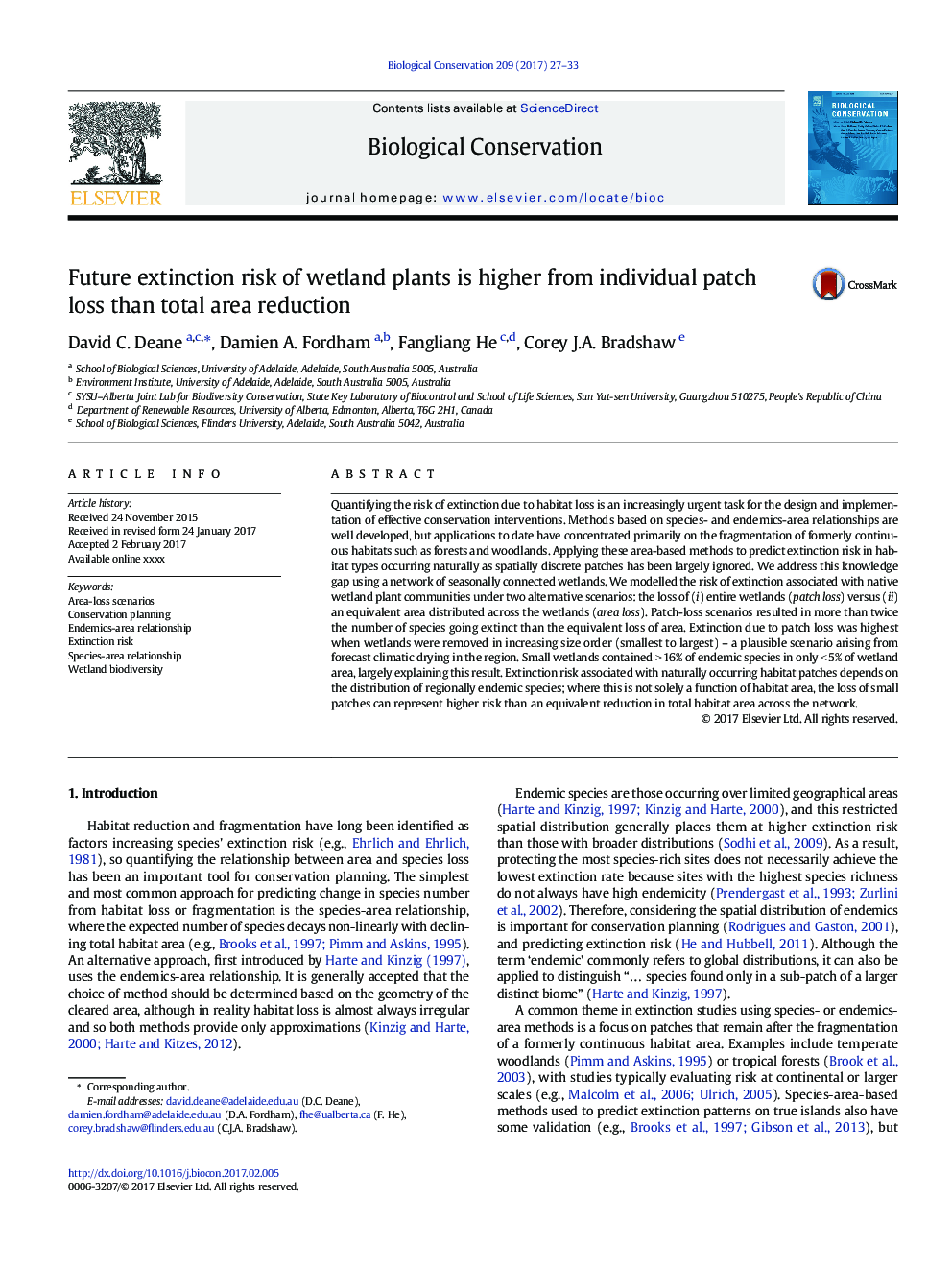| Article ID | Journal | Published Year | Pages | File Type |
|---|---|---|---|---|
| 5743312 | Biological Conservation | 2017 | 7 Pages |
Abstract
Quantifying the risk of extinction due to habitat loss is an increasingly urgent task for the design and implementation of effective conservation interventions. Methods based on species- and endemics-area relationships are well developed, but applications to date have concentrated primarily on the fragmentation of formerly continuous habitats such as forests and woodlands. Applying these area-based methods to predict extinction risk in habitat types occurring naturally as spatially discrete patches has been largely ignored. We address this knowledge gap using a network of seasonally connected wetlands. We modelled the risk of extinction associated with native wetland plant communities under two alternative scenarios: the loss of (i) entire wetlands (patch loss) versus (ii) an equivalent area distributed across the wetlands (area loss). Patch-loss scenarios resulted in more than twice the number of species going extinct than the equivalent loss of area. Extinction due to patch loss was highest when wetlands were removed in increasing size order (smallest to largest) - a plausible scenario arising from forecast climatic drying in the region. Small wetlands contained >Â 16% of endemic species in only <Â 5% of wetland area, largely explaining this result. Extinction risk associated with naturally occurring habitat patches depends on the distribution of regionally endemic species; where this is not solely a function of habitat area, the loss of small patches can represent higher risk than an equivalent reduction in total habitat area across the network.
Related Topics
Life Sciences
Agricultural and Biological Sciences
Ecology, Evolution, Behavior and Systematics
Authors
David C. Deane, Damien A. Fordham, Fangliang He, Corey J.A. Bradshaw,
